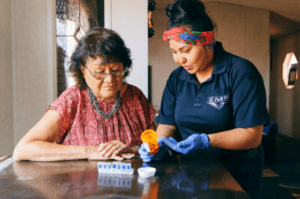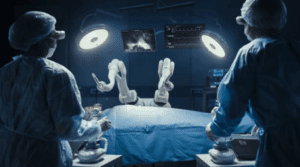Table of Contents
ToggleHealthcare Problems and Solutions
Healthcare has many problems that people overlook, but they seriously mess with how well we get treated and how effective the whole medical system is. These overlooked problems include misdiagnosis, system flaws, access issues, and tricky common conditions. In this article, we will discuss these issues, understand why they happen, and figure out how we can solve them to make healthcare better for everyone. So, without wasting time, let’s dig in.
The Most Overlooked Healthcare Problems
Human doctors and nurses also make mistakes. These could be while diagnosing a patient or prescribing a medication. Here are some of the healthcare problems that are missed while treating a patient. Although the medical staff should be extra alert while treating a patient, there is no solution for human mishaps.
Misdiagnosis
Misdiagnosis happens when a doctor says you have one thing, but you actually have something else. This situation can lead to wrong treatments or delays in getting the proper treatment, which can make a patient’s condition worse or make them go through unnecessary treatments.

Here are the common types of misdiagnosis that happen in healthcare.
- Infections mistaken for other illnesses: Sometimes viral infections get confused with bacterial ones, leading to unnecessary antibiotics.
- Heart attacks misdiagnosed as anxiety: Chest pain and shortness of breath might be seen as anxiety, especially in women, instead of a heart attack.
- Cancer misdiagnosis: There are cases where doctors misdiagnose cancer patients, either by missing the cancer wholly or by identifying the wrong type, which can be life-threatening.
Systemic Issues
The healthcare system has many built-in problems that need to be fixed. These issues can be hazardous for patients. Doctors and healthcare workers often don’t get enough training on how to spot certain diseases or how to deal with complicated cases. This lack of exercise leads to misdiagnosis and missed diagnoses.

Hospitals and clinics often need more resources. When a hospital lacks resources, patient care suffers. For example, if a clinic doesn’t have enough MRI machines, patients have to wait longer for scans, delaying their diagnosis and treatment.
Access to Care
Gaining access to healthcare, especially in rural areas, can take a lot of work for some patients. One of the biggest problems is long wait times. Long wait times mean people suffer longer, and their conditions can get worse while they wait for treatment.
In many places, there aren’t enough specialists. Specialists are doctors who focus on specific types of medical issues, like heart problems or mental health. If you live in a small town or rural area, you might have to travel hours to see a specialist.

Money is a massive barrier to healthcare. Even with insurance, healthcare can be crazy expensive. Copays, deductibles, and medications all add up. If you don’t have insurance, it’s even worse. Many people avoid going to the doctor because they can’t afford it, which means their health problems keep getting worse.
Commonly Overlooked Diseases and Conditions
Let’s discuss some diseases and conditions that doctors often miss or misdiagnose. These slip through the cracks but seriously mess with people’s lives.
Chronic Illnesses
Fibromyalgia: This one’s a real pain, literally. People with fibromyalgia feel pain all over their bodies, but a lot of doctors think it’s all in their heads. Because of this, they don’t get the proper treatment and end up suffering in silence.
Lyme Disease: Lyme disease is sneaky. It comes from tick bites and can mimic a bunch of other illnesses. Doctors often misdiagnose it as something else, like the flu or chronic fatigue syndrome. This means people don’t get the antibiotics they need, and the disease can get worse over time.

Mental Health Disorders
Depression and Anxiety: These are super common, but they often fly under the radar, especially in older adults. Many doctors don’t spot the signs right away, or they might think the symptoms are just a normal part of aging. However, untreated depression and anxiety can seriously affect someone’s quality of life.
Bipolar Disorder: Bipolar disorder can be tricky to diagnose because it has ups and downs. People with bipolar disorder have mood swings that go from really high (mania) to shallow (depression). Sometimes, doctors see the depression part and miss the mania, so they diagnose it as plain old depression. This means the treatment isn’t proper, and the person doesn’t get better.
How We Can Fix These Issues
We need to take some serious steps to tackle these overlooked diseases and conditions. A small step towards tackling these diseases can make a big difference.

Better Awareness and Training
Doctors need better training to recognize these conditions. This means more education on the symptoms and how they can vary from person to person. Awareness campaigns can also help the public identify when something’s wrong and push for the correct diagnosis.
More Research
We need more research on these conditions to better understand them and develop better treatments. Research can also help us understand why these diseases are so often overlooked and how we can change that.
Patient Advocacy
Patients need to be their advocates. If you feel like something’s wrong and your doctor isn’t taking you seriously, don’t be afraid to push for more tests or get a second opinion. Keeping detailed records of your symptoms can also help your doctor understand what’s going on.
Support Systems
Having a solid support system can make a huge difference. Friends, family, and support groups can provide emotional support and practical advice for navigating the healthcare system.

Healthcare Reform
We need to reform healthcare systems to focus more on patient outcomes instead of just administrative efficiency. This means investing in preventive care and managing chronic diseases better.
Communication Improvements
Better communication protocols among healthcare providers can prevent information silos. With this, nurses can easily make sure all relevant patient info is available for accurate diagnosis and treatment.
Check out the sample papers of the NURS FPX 4000 assessment.
- NURS-FPX 4000 Assessment 2 Applying Library Research
- NHS-FPX4000 Assessment 3 Applying Ethical Principles
- NHS-FPX4000 Assessment 4 Analyzing Healthcare Issues
What Should You Do When Doctors Can’t Diagnose You?
Sometimes, you know something’s wrong, but your doctor can’t figure it out. That’s super frustrating. Here’s what you can do if you’re in that situation.
Get a Second Opinion
First things first, feel free to get a second opinion. It’s okay to see another doctor if your current one isn’t getting it right. Another doctor might see something your first one missed. Plus, a fresh set of eyes can sometimes make all the difference.
Consult a Specialist
If your symptoms are specific or complex, consider seeing a specialist. Specialists focus on particular areas of medicine and might have more experience with your symptoms. For example, if you’re having constant stomach issues, a gastroenterologist (a stomach doctor) can help more than your regular doctor.

Keep Detailed Records of Your Symptoms
Write everything down. Keep a symptom diary where you note what you’re feeling when it happens and any potential triggers you notice. This can help your doctor see patterns and understand what might be going on. It’s like giving them a puzzle with more pieces—they’re more likely to see the whole picture.
Ask Questions
Don’t be shy—ask lots of questions. Sometimes, doctors might overlook something because they don’t have all the info. Make sure to tell them everything, even if you think it’s not essential. Ask about other possible diagnoses and if there are any tests or treatments you haven’t tried yet.
With these steps, you can take control of your health and get closer to finding out what’s going on. Remember, you’re your own best advocate, so don’t be afraid to speak up and push for the care you need.
How Can Technology Help in Reducing Misdiagnosis?
As technology has evolved and made most of the work more accessible around the world, it has also revolutionized healthcare. Now, technology is seriously changing the game in healthcare.
- AI and machine learning are like super-smart robots that can analyze tons of data way faster than humans. They can look at your medical records, test results, and even patterns in your symptoms to help doctors make more accurate diagnoses.
- With AI, doctors can create more personalized treatment plans. Instead of a one-size-fits-all approach, AI can help figure out what treatments work best for your specific condition based on data from other patients with similar issues.
- AI can also predict potential health problems before they become serious. Analyzing your health data can spot early warning signs of conditions like heart disease or diabetes so you can take action sooner.
- There are chatbots and symptom checker apps that can guide you through your symptoms and suggest possible conditions. While they’re not a substitute for an actual doctor, they can give you a starting point and help you understand what might be going on. You can then take this information to your doctor for further investigation.

Benefits of Using Technology
Faster Diagnoses: AI can quickly process information and suggest possible conditions, speeding up the diagnosis process.
More Accurate Diagnoses: AI can reduce the chances of misdiagnosis and help doctors catch rare conditions by analyzing vast amounts of data.
Better Access to Care: Telemedicine and AI-powered tools make it easier for people in remote areas to get the healthcare they need without traveling long distances.
Continuous Monitoring: Wearable devices and health apps can continuously monitor your health and alert you and your doctor to any concerning changes.
Bottomline
Remember, healthcare is all about teamwork. Doctors, technology, and collaboration can lead to better diagnoses, treatments, and overall care. So, let’s push for an efficient, accessible, and accurate healthcare system. Your health deserves nothing less.









